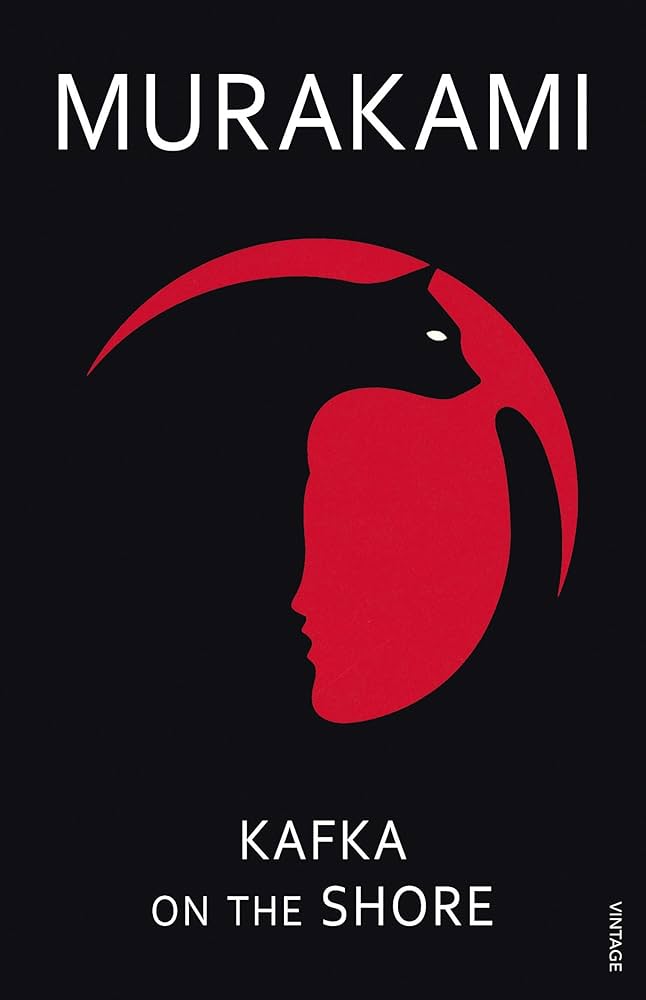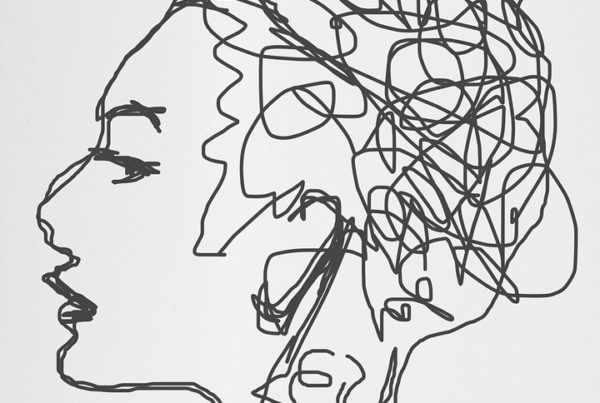
“Narrow minds, devoid of imagination. Intolerance, theories cut off from reality, empty terminology, usurped ideas, inflexible systems. Those are the things that really frighten me. What i absolutely fear and loathe”
– Haruki Murakami
Fantasy as a narrative genre has existed for millenia, from the Mesopotamian Epic of Gilgamesh to Homer’s Iliad and Odyssey. It transcends historical shifts and cultural landscapes. Fantasy can be defined as imaginative fiction that draws its impact from the unusual nature of both characters and settings. Stories set in unnatural worlds, where supernatural events occur and are experienced by supernatural beings, fall within this genre. Haruki Murakami’s diverse background—growing up in Kobe, running a jazz bar, and winning prestigious awards—shows in his writing, as he crafts stories that blur the lines between reality and fantasy. In an interview with The Guardian (Jordison, 2019) Murakami affirms: “For me, writing a novel is like having a dream. Writing a novel lets me intentionally dream while I’m still awake. I can continue yesterday’s dream today, something you can’t normally do in everyday life. It’s also a way of descending deep into my own consciousness. So while I see it as dreamlike, it’s not fantasy. For me the dreamlike is very real.”
This dreamlike quality permeates Kafka on the Shore, where the setting and plot seem liminal. The above quote brings about the question ‘What is fantasy and what is not?’. Barthes (1977) introduces the concept of the “death of the author,” where the Author’s identity becomes irrelevant once a narrative is told, emphasizing impersonal storytelling; the work becomes unbonded to a sole vision. The reader becomes ‘the space on which all the quotations that make up a writing are inscribed without any of them being lost[…]’ (Barthes, 1977). Then, what makes Kafka on the Shore as a fantastical piece of literature?
The World of Kafka on the Shore and It’s Fantastical Elements
Kafka of the Shore follows two protagonists: Kafka Tamura, a fifteen-year old highschooler, and Satoru Nakata, a disabled old man. Kafka, burdened by a prophecy from his estranged father, flees from Tokyo to Takamatsu. On this journey, he meets two women who he suspects might be the mother and sister who abandoned him as a child. He finds solace in a library, where he is supported by Oshima, a transgender librarian, and encounters Miss Saeki, a figure central to his evolving understanding of his past. Along the way, Kafka’s subconscious manifests as a mysterious boy named Crow, who foretells that Kafka cannot escape his fate. This character guides Kafka through his psychological struggles, hinting at the inevitability of his journey.
In the even-numbered chapters, we follow Nakata, whose search for a missing kitten and a fateful murder leads him westward with a truck driver named Hoshino. Nakata’s and Kafka’s storylines finally converge when they both find themselves with unfinished business in the parallel world. Meanwhile, Kafka confronts his subconscious, and ultimately finds peace and returns to his life. At the heart of the novel is the Oedipal prophecy concerning Kafka’s destiny to kill his father and sleep with his mother and sister. Despite both Kafka and Nakata’s efforts to resist their predetermined fates, the novel suggests that fate is inescapable. This inevitability is a central theme, driving the characters toward the fulfillment of their personal journeys.
The boy named Crow, a supernatural or psychological guide, disappears when Kafka comes to terms with his past, further emphasizing the character’s role in Kafka’s transformation. The parallel world, which is accessed through the entrance stone, acts as a metaphysical space where the characters’ internal struggles play out. The organization of this world maps onto the ancient Japanese philosophy Shintō: The Plain of the High Heaven, where the boy named Crow resides (the world of the deities), the Middle Land where majority of the plot takes place (the present world), and Hades to which the protagonists are tied to (the world after death). These worlds are arranged in vertical order (Hirai, 2024). By the novel’s conclusion, Kafka undergoes a profound transformation, signifying the bildungsroman nature of the story, where the protagonist reaches a new stage of life through self-discovery and acceptance of his fate. Murakami skillfully blends the fantastical and the real, hinting that writing and dreams in themselves are unable to escape from the boundaries of fantasy. He invites readers to consider the complex interplay between the physical world and the psyche of his characters.
Bifurcation of the Soul and Mind: Two Protagonists
Nakata and Kafka Tomura represent two different spiritual ideas in Japanese philosophy, anatta and metanoetics. Nakata Satoru, after a mystical event during middle-school, is left with disabilities, losing the ability to read and write. He describes himself as “empty,” reflecting the Buddhist concept of anatta—the absence of a permanent self. His simplicity and connection with cats, which symbolize luck and spirituality in Japan, suggest he has transcended the need for material fulfillment, embodying a state of peaceful spirituality. Nakata’s connection to cats may signify his loss of self, elevating him to a spiritual realm where he functions as a vessel for consciousness, in harmony with the impermanence of existence. Kafka Tamura, in contrast, grapples with a prophetic destiny tied to familial trauma. His journey reflects the philosophy of metanoia, a transformative change of heart. Guided by inner wisdom and the boy named Crow, Kafka faces his fears and burdens, eventually accepting fate. His path mirrors Tanabe Hajime’s idea that true transcendence requires a death-and-rebirth process, overcoming noetic wisdom. Kafka’s initiation in a liminal world enables him to reconcile with his subconscious, granting him the possibility of a “normal” life afterward. Both characters explore themes of identity, self-transcendence, and the intersection between the spiritual and mundane realms.
The experiences of Nakata and Kafka not only represent profound spiritual journeys but also embody key fantastical elements that allow for the narrative’s blend of myth and metaphysical exploration. In Kafka on the Shore, Murakami masterfully intertwines the fantastical with the mundane, and immerses us in his dreamlike world. In doing so, readers have the freedom to interpret the story’s deeper meanings in a personal, introspective way, reminding us that fantasy isn’t confined to mythical worlds but can emerge from the depths of our subconscious.
Available at your local book store or online, starting from €11,64.

“Narrow minds, devoid of imagination. Intolerance, theories cut off from reality, empty terminology, usurped ideas, inflexible systems. Those are the things that really frighten me. What i absolutely fear and loathe”
– Haruki Murakami
Fantasy as a narrative genre has existed for millenia, from the Mesopotamian Epic of Gilgamesh to Homer’s Iliad and Odyssey. It transcends historical shifts and cultural landscapes. Fantasy can be defined as imaginative fiction that draws its impact from the unusual nature of both characters and settings. Stories set in unnatural worlds, where supernatural events occur and are experienced by supernatural beings, fall within this genre. Haruki Murakami’s diverse background—growing up in Kobe, running a jazz bar, and winning prestigious awards—shows in his writing, as he crafts stories that blur the lines between reality and fantasy. In an interview with The Guardian (Jordison, 2019) Murakami affirms: “For me, writing a novel is like having a dream. Writing a novel lets me intentionally dream while I’m still awake. I can continue yesterday’s dream today, something you can’t normally do in everyday life. It’s also a way of descending deep into my own consciousness. So while I see it as dreamlike, it’s not fantasy. For me the dreamlike is very real.”
This dreamlike quality permeates Kafka on the Shore, where the setting and plot seem liminal. The above quote brings about the question ‘What is fantasy and what is not?’. Barthes (1977) introduces the concept of the “death of the author,” where the Author’s identity becomes irrelevant once a narrative is told, emphasizing impersonal storytelling; the work becomes unbonded to a sole vision. The reader becomes ‘the space on which all the quotations that make up a writing are inscribed without any of them being lost[…]’ (Barthes, 1977). Then, what makes Kafka on the Shore as a fantastical piece of literature?
The World of Kafka on the Shore and It’s Fantastical Elements
Kafka of the Shore follows two protagonists: Kafka Tamura, a fifteen-year old highschooler, and Satoru Nakata, a disabled old man. Kafka, burdened by a prophecy from his estranged father, flees from Tokyo to Takamatsu. On this journey, he meets two women who he suspects might be the mother and sister who abandoned him as a child. He finds solace in a library, where he is supported by Oshima, a transgender librarian, and encounters Miss Saeki, a figure central to his evolving understanding of his past. Along the way, Kafka’s subconscious manifests as a mysterious boy named Crow, who foretells that Kafka cannot escape his fate. This character guides Kafka through his psychological struggles, hinting at the inevitability of his journey.
In the even-numbered chapters, we follow Nakata, whose search for a missing kitten and a fateful murder leads him westward with a truck driver named Hoshino. Nakata’s and Kafka’s storylines finally converge when they both find themselves with unfinished business in the parallel world. Meanwhile, Kafka confronts his subconscious, and ultimately finds peace and returns to his life. At the heart of the novel is the Oedipal prophecy concerning Kafka’s destiny to kill his father and sleep with his mother and sister. Despite both Kafka and Nakata’s efforts to resist their predetermined fates, the novel suggests that fate is inescapable. This inevitability is a central theme, driving the characters toward the fulfillment of their personal journeys.
The boy named Crow, a supernatural or psychological guide, disappears when Kafka comes to terms with his past, further emphasizing the character’s role in Kafka’s transformation. The parallel world, which is accessed through the entrance stone, acts as a metaphysical space where the characters’ internal struggles play out. The organization of this world maps onto the ancient Japanese philosophy Shintō: The Plain of the High Heaven, where the boy named Crow resides (the world of the deities), the Middle Land where majority of the plot takes place (the present world), and Hades to which the protagonists are tied to (the world after death). These worlds are arranged in vertical order (Hirai, 2024). By the novel’s conclusion, Kafka undergoes a profound transformation, signifying the bildungsroman nature of the story, where the protagonist reaches a new stage of life through self-discovery and acceptance of his fate. Murakami skillfully blends the fantastical and the real, hinting that writing and dreams in themselves are unable to escape from the boundaries of fantasy. He invites readers to consider the complex interplay between the physical world and the psyche of his characters.
Bifurcation of the Soul and Mind: Two Protagonists
Nakata and Kafka Tomura represent two different spiritual ideas in Japanese philosophy, anatta and metanoetics. Nakata Satoru, after a mystical event during middle-school, is left with disabilities, losing the ability to read and write. He describes himself as “empty,” reflecting the Buddhist concept of anatta—the absence of a permanent self. His simplicity and connection with cats, which symbolize luck and spirituality in Japan, suggest he has transcended the need for material fulfillment, embodying a state of peaceful spirituality. Nakata’s connection to cats may signify his loss of self, elevating him to a spiritual realm where he functions as a vessel for consciousness, in harmony with the impermanence of existence. Kafka Tamura, in contrast, grapples with a prophetic destiny tied to familial trauma. His journey reflects the philosophy of metanoia, a transformative change of heart. Guided by inner wisdom and the boy named Crow, Kafka faces his fears and burdens, eventually accepting fate. His path mirrors Tanabe Hajime’s idea that true transcendence requires a death-and-rebirth process, overcoming noetic wisdom. Kafka’s initiation in a liminal world enables him to reconcile with his subconscious, granting him the possibility of a “normal” life afterward. Both characters explore themes of identity, self-transcendence, and the intersection between the spiritual and mundane realms.
The experiences of Nakata and Kafka not only represent profound spiritual journeys but also embody key fantastical elements that allow for the narrative’s blend of myth and metaphysical exploration. In Kafka on the Shore, Murakami masterfully intertwines the fantastical with the mundane, and immerses us in his dreamlike world. In doing so, readers have the freedom to interpret the story’s deeper meanings in a personal, introspective way, reminding us that fantasy isn’t confined to mythical worlds but can emerge from the depths of our subconscious.
Available at your local book store or online, starting from €11,64.




